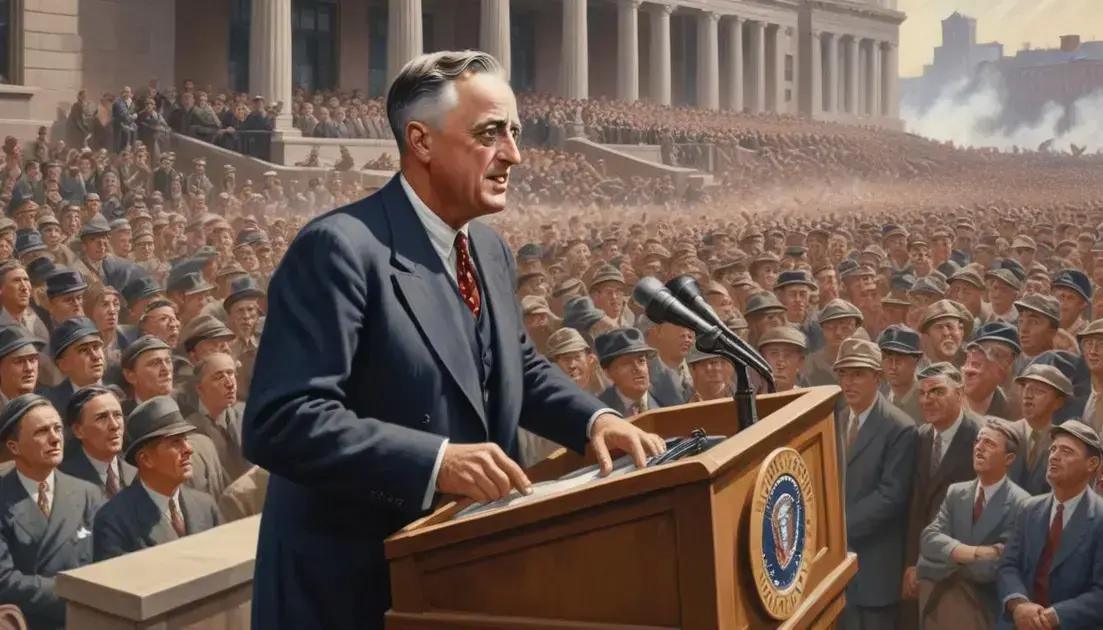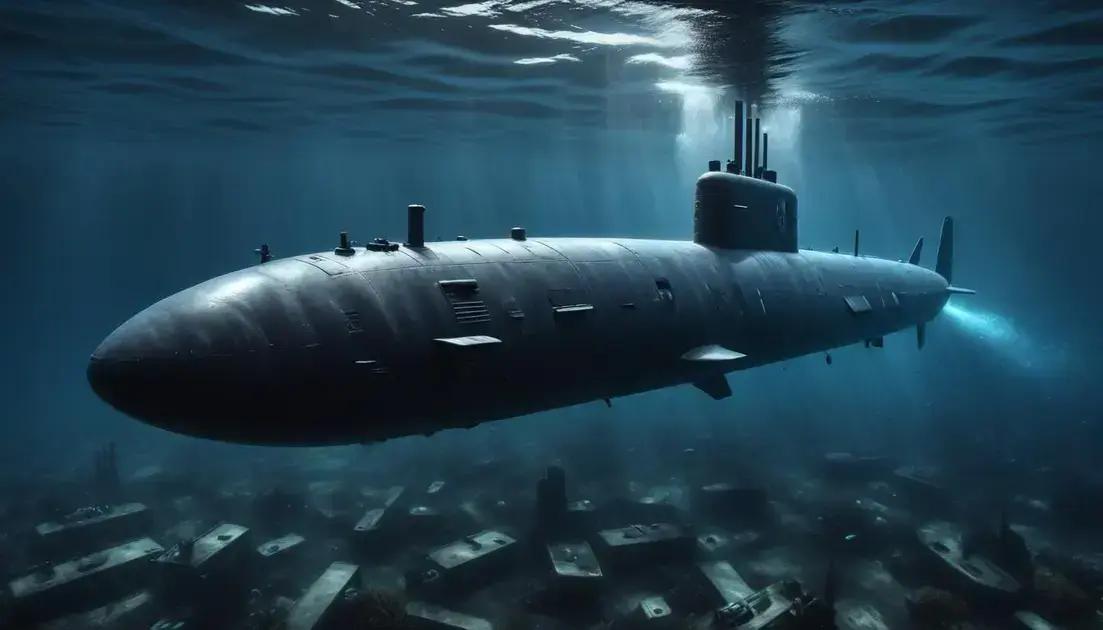
Cuban Missile Crisis: Nuclear Tension and Détente
The Cuban Missile Crisis was a key event in 1962 that brought the world close to nuclear war between the USA and the Soviet Union. Major lessons emerged, emphasizing the necessity of open communication, diplomacy, and careful planning to prevent misunderstandings in international relations. The crisis highlighted the importance of transparency and the human costs associated with military decisions. Overall, it reshaped global politics and led to significant arms control discussions, representing a fundamental moment in the Cold War era.
In 1962, the world faced a nuclear disaster during the Cuban Missile Crisis. This confrontation between the USA and USSR reshaped our global landscape forever. Curious about how it unfolded? Let’s dive in!
The Background of the Cuban Missile Crisis
The Cuban Missile Crisis began in October 1962. This tense situation arose when the United States spotted Soviet missiles in Cuba. This was alarming news because Cuba is just 90 miles from Florida. The U.S. feared these missiles could strike American cities.
During the 1960s, the Cold War was in full swing. The United States and the Soviet Union were rivals. Each side wanted to show power and influence worldwide. The U.S. had long been worried about Cuba, especially after Fidel Castro took power in 1959.
As a response to U.S. actions, including failed attempts to overthrow Castro, the Soviet Union decided to help Cuba. They sent missiles and other military equipment to assist Cuba and protect it from American interference.
President John F. Kennedy made it clear that the U.S. would not tolerate Soviet missiles in Cuba. He spoke to the nation on October 22, 1962, urging Americans to remain calm. Kennedy also announced a naval blockade around Cuba, preventing further shipments of military supplies.
This crisis led to high tensions globally. Many feared a nuclear war could break out at any moment. The world watched closely as diplomacy played a crucial role in avoiding catastrophe.
Key Events of 1962
In 1962, several key events shaped the Cuban Missile Crisis. The tension began to rise in January when Soviet leader Nikita Khrushchev decided to support Cuba. He believed that placing missiles on the island would protect it from U.S. threats.
In April, America discovered Soviet military shipments heading to Cuba. This raised alarms in Washington. The U.S. government started to worry about missiles being set up just miles from Florida.
By October, U.S. spy planes spotted the missile sites in Cuba. This was a major turning point. On October 16, President Kennedy was informed of the missile installations. The news shocked him and his advisors.
From October 16 to 22, a tense standoff occurred. Kennedy decided to keep the information secret while evaluating options. He chose a naval blockade to stop any further shipments of weapons to Cuba.
On October 22, Kennedy addressed the nation. He revealed the situation to the American public and called for calm. People were anxious, but Kennedy’s leadership helped reassure them.
After days of tension, Khrushchev agreed to withdraw the missiles. By October 28, the major crisis was over. This event changed U.S.-Soviet relations and stressed the importance of communication in global politics.
Impact on US-Soviet Relations
The Cuban Missile Crisis had a major impact on US-Soviet relations. This event marked a critical point in the Cold War. Both nations realized how close they came to a nuclear disaster. This understanding changed the way they communicated.
After the crisis, there was a shift towards greater diplomacy. Leaders became more cautious about their actions. They understood that one wrong move could lead to catastrophic results. This fear pushed both sides to talk more openly.
One positive change was the creation of the “Hotline”. This direct communication link between Washington and Moscow was established to prevent misunderstandings. The objective was to ensure that leaders could connect quickly during a crisis.
Additionally, both nations began to negotiate arms control agreements. The Limited Test Ban Treaty of 1963 was a significant step. It aimed to prevent nuclear testing in the atmosphere, underwater, and in space.
Over the years, this crisis shaped future interactions. The tensions of the past led to more cooperation later. Both nations learned the importance of dialogue in reducing the threat of nuclear war.
Long-term Effects on Global Politics
The Cuban Missile Crisis had lasting effects on global politics. This crisis changed how countries viewed nuclear weapons. Before 1962, many nations saw them as powerful tools. After the crisis, the threat of nuclear war became very real.
One major effect was the rise of arms control discussions. Countries realized they needed to work together to avoid nuclear conflicts. Treaties like the Nuclear Non-Proliferation Treaty (NPT) began to take shape. This treaty aimed to prevent the spread of nuclear weapons and promote peaceful uses of nuclear energy.
The crisis also changed military strategies worldwide. Nations started focusing more on defense rather than aggression. They recognized that peace was essential for stability in international relations.
Furthermore, the crisis highlighted the importance of diplomacy. World leaders understood that open communication was vital to prevent misunderstandings. This paved the way for more diplomatic efforts in different regions.
Overall, the long-term effects of the Cuban Missile Crisis reshaped how countries interact. Nations became more aware of the consequences of their actions. Today, we still see the echoes of this event in global politics, as countries navigate the complex landscape of power and responsibility.
Lessons Learned from the Crisis
The Cuban Missile Crisis taught us many important lessons. First, it showed how quickly tensions can escalate. Both the U.S. and the Soviet Union almost faced a nuclear war over misunderstandings. This makes clear the need for clear communication.
Another lesson is the importance of diplomacy. Leaders learned that talking to each other is crucial. During the crisis, back-channel communications helped prevent disaster. Engaging in honest discussions can reduce fears and misconceptions.
Moreover, the crisis highlighted the need for careful planning. Countries must think ahead and prepare for possible outcomes. This includes having strategies in place for conflict resolution. By being proactive, nations can avoid dangerous situations.
The importance of transparency also became clear. Countries should openly share their military actions to build trust. When nations are honest about their intentions, it lessens the chance of panic.
Finally, the crisis served as a reminder of the human cost of war. Leaders realized that the decisions they make affect millions of lives. Thinking about these consequences is essential when engaging in international politics.
Conclusion
In conclusion, the Cuban Missile Crisis was a turning point in history. It taught us valuable lessons about communication, diplomacy, and planning. Understanding these lessons helps us prevent similar conflicts today.
By learning to talk openly and clearly, we can build trust among nations. This trust is key to avoiding misunderstandings that can lead to disaster. Moreover, being prepared and thinking ahead ensures safer international relations.
The crisis also reminds us that leaders must consider the human cost of their decisions. Every choice can affect countless lives. By remembering these lessons, we can work towards a more peaceful world.


